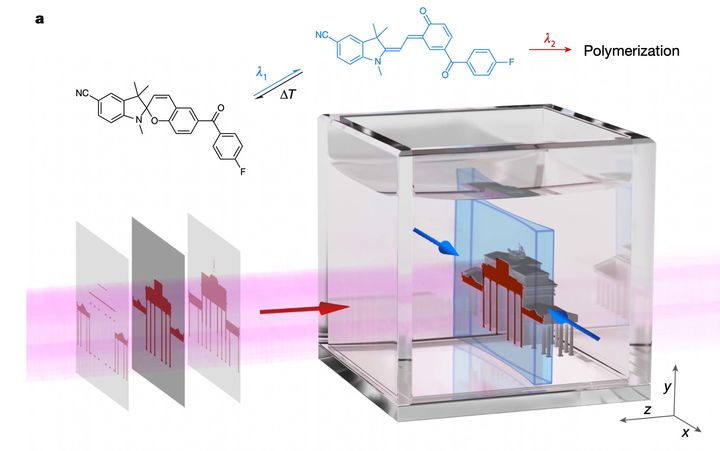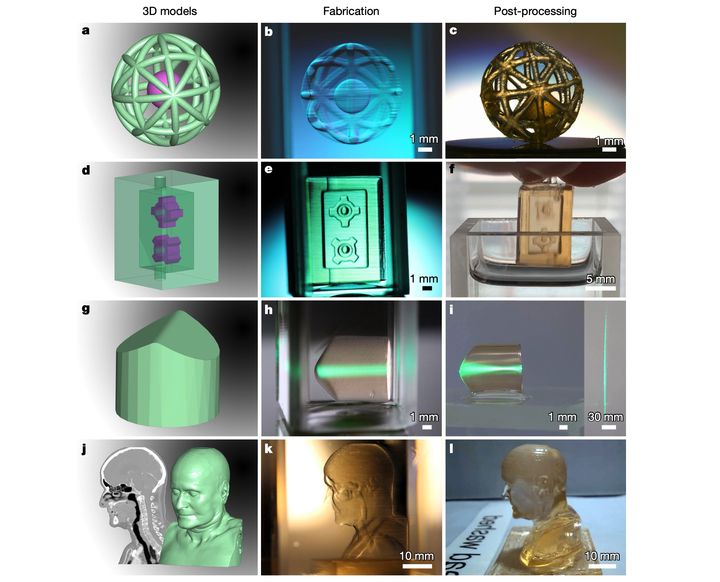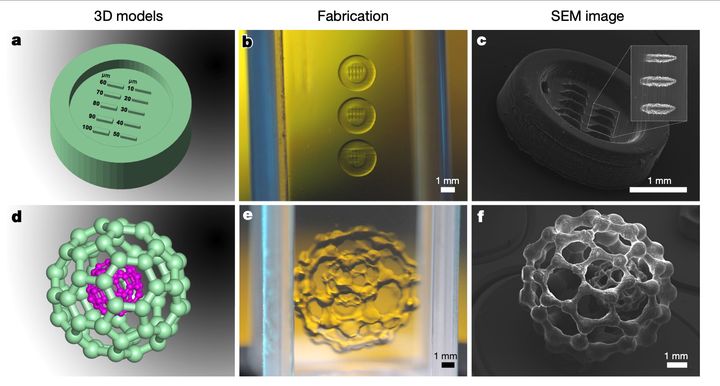
New information about secretive volumetric 3D printing startup xolo is revealed in a newly-released research paper.
Volumetric 3D Printing
Volumetric 3D printing is an entirely new form of 3D printing that promises to speed up the printing process by literally orders of magnitude. It’s based on the concept of blasting repeated light images into a 3D volume of transparent resin from different angles. The repeated exposures cause a 3D object to solidify in the middle of the resin tank at extreme speed.
That sounds straightforward, but in fact volumetric 3D printing is very complex.
If successful, volumetric 3D printing could rapidly overtake many existing forms of 3D printing, particularly SLA, LCD, and DLP methods, and give rise to new forms of additive manufacturing. Because of this potential there are several groups working on volumetric 3D printing. One of them is Berlin-based xolo.
Aside from a very high-level overview of their process, we haven’t learned much about what xolo has been up to in their secret labs. However, a new paper published today in Nature entitled “Xolography for linear volumetric 3D printing” could reveal a great deal more about their process.
Xolography

The first thing we learn is that their process is called “xolography”, based on the letter “X”. You’ll see why this is important shortly. They say:
“Here we introduce xolography, a dual colour technique using photoswitchable photoinitiators to induce local polymerization inside a confined monomer volume upon linear excitation by intersecting light beams of different wavelengths. We demonstrate this concept with a volumetric printer designed to generate three-dimensional objects with complex structural features as well as mechanical and optical functions.”
Their approach is ingenious: they use two different kinds of light energy upon a vat of photopolymer resin that reacts differently with the light energy. This also explains the name of the company and process, as “X” signifies the intersection of the two light sources.
They’re trying to resolve the problem of non-linear resin responses to received energy. Basically, most existing volumetric approaches result in “fuzzy” solidification that constrains resolution.
But in xolography, two different wavelengths of energy are used at the same time. The idea here is that the first wavelength “activates” a region, and a second, intersecting wavelength can then cause the activated resin to polymerize. Or, most interestingly, it can inhibit polymerization!
These two capabilities allow xolography to produce solids of high resolution.
How does it work, exactly? It turns out xolo’s approach is to project a “sheet” into the resin vat. “Sheets” seem much like a layer, but there are many different angles; they are not stacked on top of each other to build the object like you’d see in other 3D printing processes.
A second projection causes the solidification. The projector is in a fixed position, while the vat is rotated to present different views. They explain:
“An orthogonally arranged projector generates light of a second wavelength and focuses sectional images of the 3D model to be manufactured into the plane of the light sheet. Only the initiator molecules in the latent state absorb the light of the projector and cause the current layer to polymerize. By projecting a video of black-and-white images during synchronized movement of the resin volume through the fixed optical setup, the desired object is continuously fabricated.”
Take a look at the image at top to see how they set up the machine.
They say that the “sheet” approach ensures that any specific voxel is exposed to the curing light only once during the entire process. This should lead to significant accuracy in print results, as their optical system is tuned to present 0.021mm square pixels when projecting.
Xolography Support Structures
One question you might be wondering about is how support structures work. It turns out that xolography requires NO support structures, regardless of the complexity of the object. This is because the loose portions of a print job are temporarily supported by the surrounding viscous resin. They say:
“The crosslinking of monomers leads to changes in density, which results in different sink rates of parts under gravity. The high printing speed and viscosity of the resin minimize this effect, so sinking only becomes apparent after fabrication has been completed.”
Incredible.
Xolography Speed

How fast is xolography? The paper suggests that it is 10,000-100,000X as fast as two-photon lithography, but that technique is used only on very small prints and deposits volume at a very slow rate. I believe this could mean something like in the order of a liter of solidified per printing hour. They further say that the print speed could increase substantially if using more powerful laser light sources and more highly tuned resins.
One interesting side effect of xolo’s approach is that it might be possible to organize a system that has an infinite axis, similar to today’s belt 3D printers. This would enable the production of very long objects at a high rate of speed, again a boost for future additive manufacturing applications. They also believe it is possible to achieve a resolution of less than 0.01mm.
I’ve been fascinated with volumetric 3D printing for a while now, and it seems that xolo is quite far along the way to producing a commercial unit. There’s going to be much more on this in the future.
